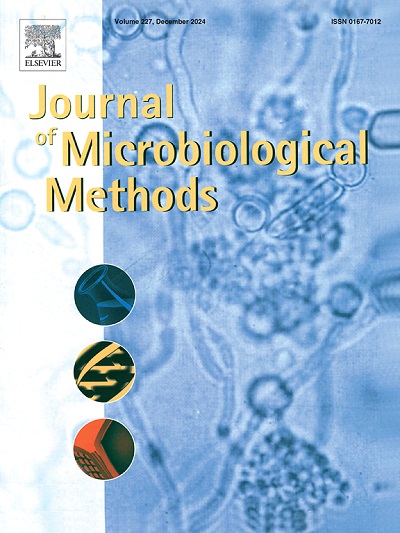β-环糊精涂层氧化锌修饰氧化石墨烯纳米杂化物用于光催化、抗菌和抗真菌应用。
IF 1.7
4区 生物学
Q4 BIOCHEMICAL RESEARCH METHODS
引用次数: 0
摘要
聚合物封装的零维/二维杂化体被认为是一种高效的多用途纳米杂化体。在此,我们报告了两步制备β-环糊精(β-CD)稳定的氧化锌纳米颗粒,支撑在二维氧化石墨烯(GO)片上。该纳米复合材料在半导体区有带隙(~5.6 eV),并通过紫外可见光谱的Tauc图得到了证实。复合材料的傅里叶变换红外光谱(FTIR)表明其聚合物附着和氧化石墨烯的部分还原。在光的作用下,染料降解的时间依赖性在3 h内表现出显著的效果。此外,对于细菌和抗真菌的通用性,纳米杂交种已经对革兰氏阳性和革兰氏阴性菌株进行了测试,结果由于纳米杂交种产生活性氧而导致菌株死亡。为了有效地防止医疗设备中细菌和霉菌的生长、繁殖和生存,这些结果表明,纳米杂化材料可以成为抗菌、抗真菌和催化表面涂层的理想替代品,不仅在生物医学领域,而且在耐用织物涂层应用中都有明显的影响。本文章由计算机程序翻译,如有差异,请以英文原文为准。

β-cyclodextrine coated zinc oxide decorated graphene oxide nano hybrid for photocataylytic, antibacterial, and antifungal applications
Polymer encapsulated zero dimensional/2D hybrids are considered as an efficient multipurpose nanohybrids. Herein, we report a two-step fabrication of β-cyclodextrine (β-CD) stabilized zinc oxide nanoparticles supported over 2D graphene oxide (GO) sheets. The nanocomposite showed band gap in the semiconductor region (∼5.6 eV) which has been confirm by Tauc plot derived from UV–visible spectrum. Fourier transformed infrared (FTIR) spectra of the composites implied its polymer attachment and partial reduction of GO. Time dependent dye degradation has been performed in present of light which showed significant efficacy within 3 h. Moreover, for bacterial and antifungal versatility, the nanohybrids has been tested against both the gram positive and gram negative bacterial strain resulting death of the strains due to generation of reactive oxygen species from the nanohybrid. To effectively prevent bacterial and mold growth, propagation, and survival in medical devices, these results suggest that the nanohybrid could be an ideal alternative for antibacterial, antifungal, and catalytic surface coatings which have an obvious impact not only in biomedical sectors but also in durable fabric coating applications.
求助全文
通过发布文献求助,成功后即可免费获取论文全文。
去求助
来源期刊

Journal of microbiological methods
生物-生化研究方法
CiteScore
4.30
自引率
4.50%
发文量
151
审稿时长
29 days
期刊介绍:
The Journal of Microbiological Methods publishes scholarly and original articles, notes and review articles. These articles must include novel and/or state-of-the-art methods, or significant improvements to existing methods. Novel and innovative applications of current methods that are validated and useful will also be published. JMM strives for scholarship, innovation and excellence. This demands scientific rigour, the best available methods and technologies, correctly replicated experiments/tests, the inclusion of proper controls, calibrations, and the correct statistical analysis. The presentation of the data must support the interpretation of the method/approach.
All aspects of microbiology are covered, except virology. These include agricultural microbiology, applied and environmental microbiology, bioassays, bioinformatics, biotechnology, biochemical microbiology, clinical microbiology, diagnostics, food monitoring and quality control microbiology, microbial genetics and genomics, geomicrobiology, microbiome methods regardless of habitat, high through-put sequencing methods and analysis, microbial pathogenesis and host responses, metabolomics, metagenomics, metaproteomics, microbial ecology and diversity, microbial physiology, microbial ultra-structure, microscopic and imaging methods, molecular microbiology, mycology, novel mathematical microbiology and modelling, parasitology, plant-microbe interactions, protein markers/profiles, proteomics, pyrosequencing, public health microbiology, radioisotopes applied to microbiology, robotics applied to microbiological methods,rumen microbiology, microbiological methods for space missions and extreme environments, sampling methods and samplers, soil and sediment microbiology, transcriptomics, veterinary microbiology, sero-diagnostics and typing/identification.
 求助内容:
求助内容: 应助结果提醒方式:
应助结果提醒方式:


